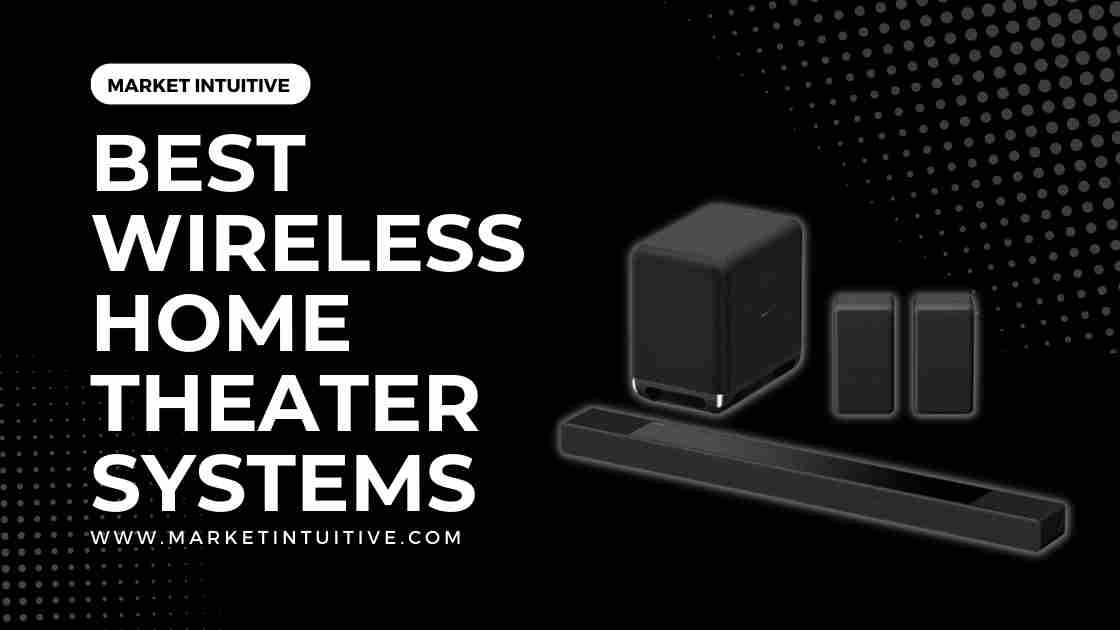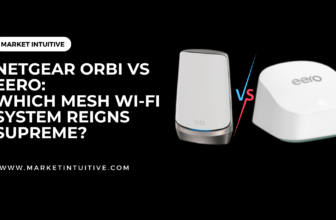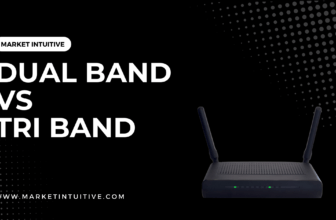Best Wireless Home Theater Systems In 2023 [Tested & Reviewed]

Going wireless is the best option if you are sick of all the cords strewn throughout your house and want a hassle-free surround sound system for your home theater. Our guide on wireless home theatre systems is designed to help you understand all the important information about wireless home theatre systems so you can choose the one that best suits your requirements and your budget.
Instead of spending hours reading about the features of various brands, read our reviews to find out everything you need to know to make a decision.
Additionally, we’ve compiled a list of the top wireless home theater systems, list all the upsides and downsides of these products to make your search much easier.
Buying Guide for Choosing the Best Wireless Home Theater System
Most of us could consider soundbars for our living rooms. They are practical and a step up from the TV’s built-in speakers. The simple speaker set cannot provide you with the desired experience when viewing movies or listening to your favorite music at home.
The sound quality is still not comparable to that of a movie theater. A wireless home theater system is superior for achieving a positive movie experience. A subwoofer, satellite speakers, and audio amplifier-receivers are all included in home theater systems.
Many vendors offer wireless home theater systems, and the cost of these bundles varies based on the features offered. They come in a single package, making buying and setting them up simple. They are also more economical than purchasing speakers and receiver amplifiers separately.
You must consider the following important factors to choose the greatest home theater system.
1. Budget and Space
Your preferences and budget can help you narrow down your options for home theatre. People typically spend a lot of money furnishing their houses and purchasing televisions.
However, many people overlook the speakers and amplifiers. Other factors include speaker positioning, room size, and open space. Choose a home theater bundle with bookshelf-sized speakers if your room is small.
If your area is moderately sized, you can choose a 7.1 arrangement with a bundle that includes either bookshelf or floor-standing speakers.
2. Speakers
The speakers are also essential for producing high-quality audio. Some home theater bundles include floor-standing speakers, while others have bookshelf speakers. With home theater systems, 5.1 channel or 7.1 channel speakers are present.
A subwoofer for low-frequency reproduction is present, and other speakers serve as satellites for the front, middle, and rear channel speakers. You can put the four satellite speakers in each corner of your room or position the speakers on the floor for your home theater setup.
3. A/V Receivers
Since the A/V receiver is the brains of any home theater setup, you should ensure that the bundle you select includes one of high caliber. Thanks to developing technology, today’s A/V receivers are jam-packed with exciting functions. Before choosing a home theater bundle, consider the following important aspects to receive the greatest deal.
4. Power
Watts are typically used to represent the amplifier’s entire power output. Make sure your receiver has enough power to supply the connected speakers with the necessary power. A/V receivers should ideally offer at least 100 watts of power to each channel for the best performance.
Impedance is used to describe how speakers and amplifiers perform. The majority of speakers are 6 or 8 ohms rated. Home theater system manufacturers carefully match the amplifier and speakers.
5. Connectivity Options
- HDMI
While slightly more recent A/V receivers include HDMI 1.3 ports, newer versions may have HDMI. The new standard supports Ethernet over HDMI, 3D video, and Audio Return Channel (ARC). A/V receivers, sound bars, and home theater in a box can receive audio from the TV using the ARC on HDMI 1.4. (HTIB).
You can upstream the audio data with HDMI ARC, eliminating the need for a separate S/PDIF audio connection. To connect several devices, such as a game console, Blu-ray / DVD player, laptop, etc., look for an AV/ receiver with at least three HDMI input connections.
- Video Conversion and 4K Upscaling
The most recent A/V receivers can upscale and convert videos, which was long thought to be a luxury feature. Different components and composite video signals can be connected to the video conversion feature to transform them into digital signals. You can connect your slightly dated audio and video devices to the TV with a single HDMI cable.
Another crucial feature is the 4K upscaling capability. This function can be useful if you are considering or have already purchased the most recent 4K resolution TV. The process upscales the lower resolution signals to a higher resolution to improve the visual quality on your HDTV or UHD TV. The upscaled signal is noticeably better even though it is not high definition.
- HDMI and 3D Pass-Through
HDMI pass-through means that the A/V receiver’s audio and video streams are not processed. Only those streams will be sent to the TV or display by the receiver. HD audio cannot be transferred using HDMI pass-through since the receiver cannot process it. You must rely on optical audio because it only supports DTS (Digital Theater Systems) and DD (Dolby Digital).
The bandwidth requirements for 3D signals are more extensive than those for regular 1080p signals in cases of 3D pass-through. The most recent HDMI 1.4 specification supports 3D. The 3D signals are accepted by A/V receivers with 3D pass-through and transmitted through HDMI to the TV. The A/C receiver does not necessarily transform 2D to 3D, though. You must connect a Blu-ray player to your TV to do it.
- Surround Sound Processing
The variety of home theater options for first-time buyers may be very daunting. Modern A/V receivers can be used to play back Dolby Digital and DTS soundtracks from HDTV broadcasts, Netflix, DVDs, Blu-ray discs, and other sources.
Furthermore, most modern home theater receivers include Dolby DTS-HD and Dolby Real HD, allowing you to experience true and immersive surround sound at home.
Some home theater receivers also come with a selection of equalization presets to give your music listening experience more punch.
6. Component and Composite Video
Composite and component video communication ports are present on almost all A/V amplifiers. These input ports guarantee backward compatibility, enabling you to connect your obsolete audio and video equipment, including VCRs, CD/DVD players, and other devices.
- Ethernet
Having Ethernet connectivity in the A/V receiver has many advantages, including making it simple to update the software and enabling online music streaming. With DLNA, you may stream music from your smartphone, tablet, and other devices and access content on your home network.
- Apple Airplay
Apple’s Airplay, which enables you to stream music, images, and videos from iTunes or Airplay-enabled devices on a network, is not available on all A/V receivers, but some do.
- USB for iPod Connectivity
USB connectivity can be especially useful if you have an older Apple device, such as an iPod 2G, 3G, or iPhone 3Gs, that does not support Airplay functions. You won’t need a docking station if your A/V receiver’s USB input is approved to work with iPads, iPhones, and iPods. You can stream music, movies, and images from your Apple device to the HDTV via the USB link on your A/V receiver.
7. Other Miscellaneous Features
- Radio Tuners
Although there are many internet radio stations where you may listen to nearly any genre of music, an in-built FM/AM tuner in the A/V receiver is still preferable. Consequently, you can also tune in to a local radio station.
- Remote Control
Even though almost all home theater packages come with remote control, the control functions are crucial. Ideally, it should contain all the necessary controls for an A/V receiver’s features. Consider the remote’s construction quality, operational range, and battery type.
- Build Quality and Function Keys
Other crucial factors include the A/V receiver’s weight, size, and construction quality. Its design should have enough vents to guarantee that the heat produced during prolonged use is appropriately expelled. Look for the accessible function keys on the receiver. It should enable you to manage most of your home theater’s functions.
Comparison of Latest Wireless Home Theater System
| Image | Name | Price | Features | Ratings |
| Dali Oberon 5 5.1 | Check Price | Overall the best, presents every frequency in full. | 5/5 | |
| Sonos Arc | Check Price | Best stereo THD performance. | 4/5 | |
| Wharfedale Diamond 12.1 | Check Price | Largest bookshelf speakers in the line up. | 5/5 | |
| Sony HT-A9 | Check Price | Best standard surround, decent for watching movies. | 4/5 | |
| Sonos Beam Gen 2 | Check Price | Overall the best powerful sound. | 3.5/5 | |
| Wharfedale DX-2 | Check Price | Most discreet, stylish and affordable solution for genuine surround sound. | 5/5 | |
| Sony HT-A7000 | Check Price | With advanced audio technologies and built-in subwoofers discover a whole new level of immersion. | 3.5/5 | |
| Q Acoustics 3050i 5.1 | Check Price | Overall the greatest intensity. | 5/5 | |
| Sennheiser Ambeo Soundbar | Check Price | Overall the best immersive experience for a standalone standbar. | 4/5 | |
| Platin Monaco 5.1 WiSA | Check Price | Overall the best affordable. | 5/5 |
The Top 10 Exclusive Wireless Home Theater Systems
Dali Oberon 5 5.1 Speaker Package
Specifications
- Channels: 5.1
- Subwoofer: 170W
- Finishes: White, Black Ash, Dark Walnut, Light Oak
The Dali Oberon 5 accomplishes an impressive achievement by rendering sound in a clean, clear manner while still preserving a big, full sound. It is relatively big and lightweight 29mm soft dome tweeter enables it to blend in with the sound produced by the woofers by dipping into lower frequencies.
Those two 13cm mid/bass drivers are made from Dali’s wood fiber/fine grain paper pulp choice of cone material, which the company claims is the best available balance between stiffness and low resonance.
They are suspended by spiders and positioned in a low-loss setting to focus on minuscule features with the highest transparency. A single-wired two-way crossover connects all three units in each speaker, producing a speaker with a nominal resistance of 6 ohms and a sensitivity of 88 dB/W/m.
The award-winning Dali Oberon 5 floorstanders are in the front row. Both the Dali On-Wall speakers (£1799) and the five-star Dali Oberon 1 stand mounts (£1699) are available as surround speakers. The Oberon Vokal center is a genuine star in the middle, and the subwoofer is the Sub E9-F.
They are the 2020 Awards Product of the Year because it brings forth the best in any audio.
Sonos Arc
Specifications
- Dimensions: 8.7 x 114 x 12cm (HxWxD)
- Voice control: Amazon Alexa, Google, Assistant
- Sound formats: Dolby Digital 5.1, Dolby Atmos, Dolby True HD, Dolby Digital Plus
- Connectivity: 1 x HDMI eARC, 1 x optical digital, Wi-Fi, Ethernet
The Sonos Arc is a great companion for 55-inch and larger TVs and can be mounted on the wall or directly to your furniture with the optional £79/$79/AU$99 mount.
On the bar, there are touch-sensitive play/pause and volume buttons. Ethernet, AirPlay 2, and eARC for Dolby Atmos from compatible TVs round out the networking options.
To create your surround soundfield, the Sonos Arc uses 11 drivers, some of which are upfiring and aimed into your space to reflect sound off your walls and ceiling. The result is a soundbar that performs amazing surround sound.
One SL rear speaker (£358; $358; $538) and, if necessary, a subwoofer (£699; $699; AU$999) can be added.
The Arc may be upgraded by purchasing two One SL rear speakers (£358 / $358 / AU$538) and, if necessary, a Sub (£699 / $699 / AU$999) if you wish to use it as part of a larger surround system.
The surround effects are beautifully placed, and the audio also has excellent dynamism and weight. If you just want to listen to music, it’s perfectly balanced, albeit it may sound a little bit more direct. But there’s no denying that for the money, this soundbar is quite remarkable.
Wharfedale Diamond 12.1HCP
Features
- Channels: 5.1
- Subwoofer: 200W
- Finishes: Black, white, walnut, light oak
The Wharfedale Diamond 12.1 HCP exudes poise, ease, cut glass diction, and charisma, presenting a mature sound, rich in impact, agility, richness, and sensitivity without sacrificing or dominating the midrange and treble.
The set includes a 12. C in the center, a quartet of the outstanding, mid-sized Diamond 12.1 bookshelf speakers for the fronts and surrounds, and an SW10 powered subwoofer for the bass.
The SW-10 is renowned for its precision and dexterity. The smaller speakers, which also have an extremely well-integrated bottom end, merge well with the incredibly musical sub. As a result, the sound is vibrant.
The Diamond 12.1 system shows to be a fantastic option for both music and film, being big enough to create a dramatic scale with a broad sound field while remaining covert and reasonably priced to be accessible to a variety of audiences.
Sony HT-A9
Specifications
- Dimensions: Speakers: 31 x 16 x 14.8cm; control hub: 5 x 15 x 15cm (HxWxD)
- Sound formats: Dolby Digital and DTS surround and height formats
- Connectivity: 1 x HDMI, 1 x eARC, Wi-Fi, AirPlay, Bluetooth, Chromecast
- Voice control: Works with Amazon Alexa and Google, Assistant
With its promise of an even, homogeneous, and immersive sound field regardless of the symmetry of your setup, Sony’s HT-A9 Wireless Home Theater System encourages customers to position their speakers randomly.
The HT-A9 is compatible with Sony’s 360 Spatial Sound Mapping, which measures the height and width of your space and blends it with speaker distance and proximity.
The goal is to use 12 ‘phantom’ speakers that are hypothetically placed all around that audio bubble to produce a dome of sound similar to Atmos.
The wide dispersion of the HT-speakers A9’s is immediately noticeable and excellent, though we still maintain a fair dose of suspicion regarding phantom channels and sound bubbles.
In comparison to other soundbar packages we’ve examined, it creates a refined precision and texture that is more immersive. The sound design never feels out of sync or takes away from the action on the screen, regardless of how haphazardly the speaker placements are, which makes the HT-A9 a great option for folks who aren’t willing to sacrifice their furniture arrangement for surround sound.
Additionally, if you want more punch, you can add one of two optional subwoofers: the 200W SA-SW3, which costs £449, or the 300W SA-SW5, which retails for £699, $700, or $899.
Although it may lack the fidelity and transparency of a standard speaker package, it nonetheless strikes a great balance between performance and use. We anticipate that many people will like this system.
Sonos Beam Gen 2
Specifications
- Dimensions (HxWxD) : 7 x 65 x 10 cm
- Weight: 2.8 kg
- Sound format support: Dolby Atmos DP / Dolby Atmos TrueHD / Dolby Digital / Multichannel PCM/ Dolby Multichannel PCM / stereo PCM
- Voice control: Works with Amazon Alexa and Google Assistant
- Connectivity: 1 x HDMI eARC, Wi-Fi, Ethernet
Even without a single vertical speaker in sight, the Sonos Beam Gen 2 manages to provide Dolby Atmos with a compact chassis in a believable, immersive manner. As an alternative, two of the soundbar’s five front-facing arrays are devoted to replicating above and surround sounds when playing Atmos content.
The Sonos Beam Gen 2 has a powerful processor and employs psychoacoustic HRTF (head-related transfer function) technology to create the illusion of height without requiring vertical positioning.
Although producing true overhead sounds may be beyond the capabilities of this little performer, its simulation of the Atmos format exceeds soundbars with similar and even higher price tags. The Beam Gen 2 provides a precise, rich audio experience with an immersive spatial soundscape that suggests depth and movement.
Want a soundstage that is even more impressive? For a more conventional surround setup, you may add two One SL back speakers (£358/$358/AU$538) and a Sub (£699/$699/AU$999).
Since the Beam Gen 2 is a Sonos product, its ability to function with a wireless multiroom system is essential to its design. Few soundbars at this price point include networking functions.
This suggests that Apple AirPlay 2 can be used to stream music to the Beam Gen 2 from a mobile device and that Spotify Connect is built-in. A future update will also bring compatibility for Amazon Music Ultra HD audio, enabling access to tracks in lossless 24-bit/48kHz and Dolby Atmos Music.
Even without upward drivers, there isn’t a better Dolby Atmos soundbar that we’d suggest if space and money are at a premium.
Wharfedale DX-2
Specifications
- Channels: 5.1
- Subwoofer: 70W
- Finishes: Black, white
It can be difficult to imagine adding a full 5.1 home theater system when you have a small home, but Wharfedale has the perfect answer.
The Wharfedale DX-2 is a follow-up to the outstanding DX-1 HCP and DX-1SE speaker systems. It is a small, endearing, and competent 5.1 surround speaker kit. Its launch price is significantly low
More articulate, more accurate, and bigger-sounding speaker bundles (like the Q Acoustics 3010i 5.1 Cinema Pack) are available as you increase the price scale.
However, their price is double that of the Wharfedale. It’s impressive how much Wharfedale has packed into the little DX-2 package, including the engaging performance, the compact yet attractive construction, and the tempting price point. It’s a fantastic option for AV enthusiasts with limited funds and space.
Sony HT-A7000
Specifications
- Dimensions (HxWxD) : 8 x 130 x 14 cm
- Weight: 8.7kg
- Connectivity: eARC, 2*HDMI 2.1, optical, USB, WiFi, Ethernet
- Voice Control: Google Assistant, Alexa
- Streaming: Chromecast, Bluetooth 5, Apple Airplay 2, WiFi
- Sound format support : Dolby Atmos/ Dolby AudioTM/ DTS:X/ DTS-HD/ PCM
Sony has a great track record for soundbars, and the HT-A7000 is no exception. This Dolby Atmos soundbar fits five front-facing drivers, two beam tweeters, two up-firing speakers, a built-in dual subwoofer, and two up-firing speakers into a single chassis, creating a 7.1.2 slab of sound.
Whether you’re watching immersive content or not, the Sony HT-A700 uses a combination of speaker positioning and psychoacoustic approaches to produce a wide and high soundstage while maintaining melody, presence, and detail.
The performance is comparable to that of the Sonos Arc in height and accuracy, but it is more believable due to the wider soundstage and forward projection.
Although it’s not the same as having direct audio from the speaker above or to the side, it works well and adds drama, improving the viewing experience. Another noteworthy component is the integrated sub, which performs tautly, carefully, and powerfully.
The A7000 excels in supported audio formats and offers Sony 360 Reality Audio, DTS:X, LPCM, Dolby Atmos (in both the Digital+ and TrueHD forms), and DTS.
Thanks to Spotify Connect, Apple AirPlay 2, Google Chromecast, and integration into a multi-room system with support for Amazon Alexa, Apple HomeKit, and Google Home, the A7000 is as crammed with streaming smarts as it is with speakers.
eARC, analog and optical audio connections, USB type-A, and two HDMI 2.1 pass-through sockets supporting 8K@60Hz, 4K@120Hz, and Dolby Vision HDR are also present.
Additionally, there is an analog output for Sony’s Acoustic Center Sync, which, when used with the provided connection, allows a compatible Bravia TV to become a part of the soundbar’s center channel.
According to Sony, the HT-A7000 can produce immersive soundscapes without additional speakers. However, two optional subwoofers are available if you have the funds and room: the 300W SA-SW5, which costs £699/$700/AU$899, and the 200W SA-SW3, which costs £449/$400/AU$599. At £449 / $350 / AU$649 for a pair, surround SA-RS3S speakers are somewhat regrettably only equipped with front-facing drivers.
If you have a more recent Sony Bravia TV, the Sony HT-A7000 is an exceptional, future-proof all-in-one performance with superb integration.
Q Acoustics 3050i 5.1 Cinema Pack
Specifications
- Channels: 5.1
- Subwoofer: 150W
- Finishes: Gray, walnut, black, white
The 3050i 5.1 Cinema Pack by Q Acoustics is audaciously cinematic and enormously enjoyable, and despite what its sound would have you believe, it doesn’t occupy much room. For your left and right channels, you receive a pair of 3050i floorstanders. For your surrounds, 3010i stand mounts, your center channel, the incredibly expressive 3090i center speaker, and for your subwoofer, the 3060S.
The system has a contagious exuberance and energy that isn’t exhausting, and it also has a lot of maturity and understanding to go along with those attributes. The 3050i’s strength and bass weight support higher intensity without sacrificing the quick timing of its more tiny partners.
One of the most outstanding features of this package is its fluidity and agility, which avoid rigidity for a quick but authentic-sounding performance. In our opinion, nobody could fail to enjoy an evening with these speakers.
Sennheiser Ambeo Soundbar
Specifications
- Dimensions: 14 x 127 x 17cm (HxWxD)
- Subwoofer: No
- Streaming: Bluetooth
- Sound formats: Dolby Atmos & DTS:X surround sound
- Connectivity: 4 x HDMI, optical digital, RCA line in
Spending two grand on a soundbar is a lot, but this Sennheiser is exceptional. It is larger than its competitors but has far larger speakers and an integrated subwoofer, providing much more powerful sound. We’re discussing a true one-box home theater system.
The negative? It can be a little challenging to position due to its size and driver placement. It is advisable to mount it on a wall.
However, if you have the room and the money to spend, this soundbar will more than pay for itself. It includes a wide range of connectivity and wireless technology support options, and the sound quality will astound you.
Platin Monaco 5.1 WiSA
Specifications
- Dimensions: (HxWxD) Center speaker: 11 x 26 x 14cm; subwoofer: 13.5 x 38 x 31cm; Satellite Speakers: 17 x 11 x 14cm; transmitter (HXW): 2.7 x 11cm
- Subwoofer: Yes, low profile
- Sound formats: Uncompressed 24-bit 48 kHz, Dolby Digital, Dolby Digital+, Dolby TrueHD, Dolby Atmos, and Dolby Atmos Virtual
- Bluetooth/Airplay/Chromecast: No
- Connectivity: HDMI ARC/eARC, Optical
- Wireless audio latency: 5.2 ms
The Monaco 5.1 WiSA-enabled surround package from Danish-American manufacturer Platin may not be a household name in home entertainment. Still, it is positioned as a cable-free (apart from power), small, cost-effective, and simple method to add high-resolution 3D sound to your TV viewing and gaming.
Describe WiSA. WiSA is an audio standard, and to be accredited, products must adhere to stringent standards for synchronization, compatibility, and latency.
This implies that without connecting to your wireless network, systems like the Platin Monaco 5.1 supports 24-bit/48kHz or 24-bit/96kHz sample rates with 5.2ms or 2.6ms of latency for sending and receiving audio, respectively. It does this via a tiny hub in the style of a hockey puck that connects to your sound source (presumably a TV or gaming console) and wirelessly sends sound to the five integrated speakers and subwoofer.
The Monaco 5.1 system will support Dolby Digital, Dolby Digital+, Dolby TrueHD, Dolby Atmos, and Dolby Atmos Virtual, and it can handle up to eight channels of uncompressed 24-bit/48kHz audio. You can buy an extra pair of satellites if you want to build a 5.1.2 system.
This system has a basic sound and provides more information and an immersive sound field than other soundbars selling for a comparable price. In general, music and film have separation, clarity, and directness, at least partly because the fronts and rears are equally considered and balanced.
Only US shops presently carry Platin. However, the business will ship anywhere around the globe through its official website. However, import taxes will be imposed on buyers in most nations.
Customers from other countries should be advised that the provided figure-of-eight power cables will need to be replaced with plugs suitable for their location because it is made for the US market. Setting up the Monaco 5.1 system is fairly easy other than this.
The WiSA SoundSend app must be downloaded once the speakers are mounted, and the WiSA hub is attached to the smart TV’s ARC/eARC port (available for iOS and Android).
FAQs On Wireless Home Theater System
After examining millions of options in the market, it is normal to have some queries before making a decision. Here are some typical queries from clients looking to make a comparable purchase.
1. Who makes the best surround system?
Different businesses produce great surround systems, and the cost of the final assembly grows with quality. The Dali Q Acoustics system is not the best in all the other categories, despite being usually referred to as the best surround sound system.
The finest feature of wireless home theater systems is their diversity, which comes with reliable surround sound. With a reasonable budget, you may have a suitable wireless home theater system for your environment.
2. Which surround sound is better, 5.1 or 7.1?
Since there are so many variables to consider when determining how many channels to include in a home theater system, the answer to this question is very personalized.
A 7.1 surround system produces a better-balanced impact because of the additional output channels. These additional channels concentrate on the tiniest details of sound engineering and enable consumers to hear the sound exactly as it was intended to be heard.
While a 7.1 system employs eight channels, a 5.1 system only uses six.
3. What number of speakers are required for Dolby Atmos?
Dolby Atmos describes the high-end audio features we often hear in movie theaters. It often operates in a surround sound format mounted overhead to deliver correct audio. Installing at least four audio speakers around your space is necessary to replicate the experience at home. For a better experience, be sure to sync all of these speakers.
4. Do I need 7.1 surround sounds?
Dolby Atmos describes the high-end audio features we often hear in movie theaters. It often operates in a surround sound format mounted overhead to deliver correct audio. Installing at least four audio speakers around your space is necessary to replicate the experience at home. For a better experience, be sure to sync all of these speakers.
5. Is there a completely wireless home theater system?
If you consider wires to include power cords and HDMI cables, then there isn’t a completely wireless surround sound system. Instead, a wireless surround sound system is one in which you don’t need to connect speaker wire to the subwoofer or any of the surround speakers, unlike some home theatre systems that use amplifiers.
Wrapping Up
Once you decide how much power, how many speakers, and what technological additions you want with your wireless home theatre system, you really can’t go wrong with any of the systems on this list.
Check out the table above if you want to compare and buy any of them.
I hope you can choose the best home theater system from our list.
Refer Articles:
Best TV Recliner in 2022: The Complete Guide
7 Best Tall TV Stand In 2022 [Cost Effective Options]

![Best Wireless Home Theater Systems In 2023 [Tested & Reviewed]](https://marketintuitive.com/wp-content/uploads/thumbs_dir/MI-Blog-Banner-q0cdw50o6n1fkku1tm39617we9fjlcwgptqzxgmszg.jpg)
![Best Wireless Home Theater Systems In 2023 [Tested & Reviewed]](https://marketintuitive.com/wp-content/uploads/thumbs_dir/Black-White-Elegant-Phone-Review-Blog-Banner-10-q0cdwef22zeasogeaq5iuyuic457qbxs349uq88v98.jpg)



